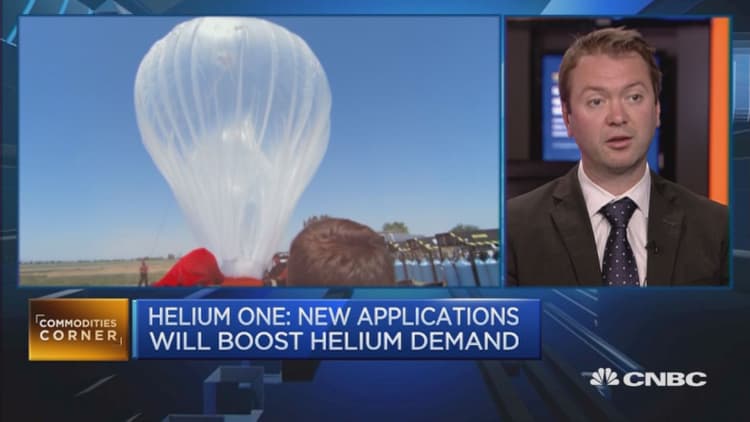An enormous store of helium discovered in Tanzania could relieve dwindling supplies of the rare gas, and help meet global demand for several years.
"The estimated resource is in the order of 54 billion cubic feet. This is seven times the current global consumption," said Professor Chris Ballentine of Oxford University, one of the researchers working on the project. He told the New Scientist that previously known reserves will be depleted by 2030 to 2040.
The find, announced this week, could be the tip of the iceberg concerning helium reserves in Tanzania, as Josh Bluett of Helium One, an exploration firm also involved in the project said, "As we conduct further exploration work we will undoubtedly discover more prospects while converting known targets into productive reserves. We believe that resources well in excess of 200 billion cubic feet could exist."
Not just used for novelty balloons, helium is important for a number of scientific applications. The recent Tanzanian find has the capacity to be used as a coolant in over one million MRI scanners, according to the scientists involved in the research. Eric Stahre, President & CEO of GE Healthcare MRI welcomed news of the find, saying to CNBC, "We are excited that a new helium resource will be available to the global market. Our helium supply is a strategic priority that we plan for in our business."
Helium is also used to cool both the Large Hadron Collider and scientific instrumentation in space. Helium-neon lasers scan barcodes at supermarket checkouts, whilst a mixture of helium and oxygen is used by deep sea divers working in pressurized environments, according to the BBC. But the gas is notoriously hard to find and capture.

Researchers from Durham and Oxford Universities, alongside Norwegian-based Helium One collaborated on the project in Tanzania's Rift Valley. On its website, Helium One says that, "the global helium market is expected to exceed $6 billion in 2016. The price of bulk liquid helium has risen more than 100 percent in the last ten years."
"In terms of impact on the market, this won't be felt until Tanzania's Eastern Rift Valley becomes a proven reserve and production starts. However, helium security is everything. It will allow users to plan and invest in helium using technologies like heavy lifting blimps or floating drones supplying internet access," Ballentine said.
He added: "I hope this is an opportunity for employment and income in Tanzania. There are several other areas in the country with similar geology that are targeted for future exploration."
Tanzania's helium discovery is also good news for the environment, as Bluett said, "The gas composition in the country is primarily inert non-greenhouse gases. This will be increasingly important in a low carbon future, considering that most helium production today is a by-product of methane production."

